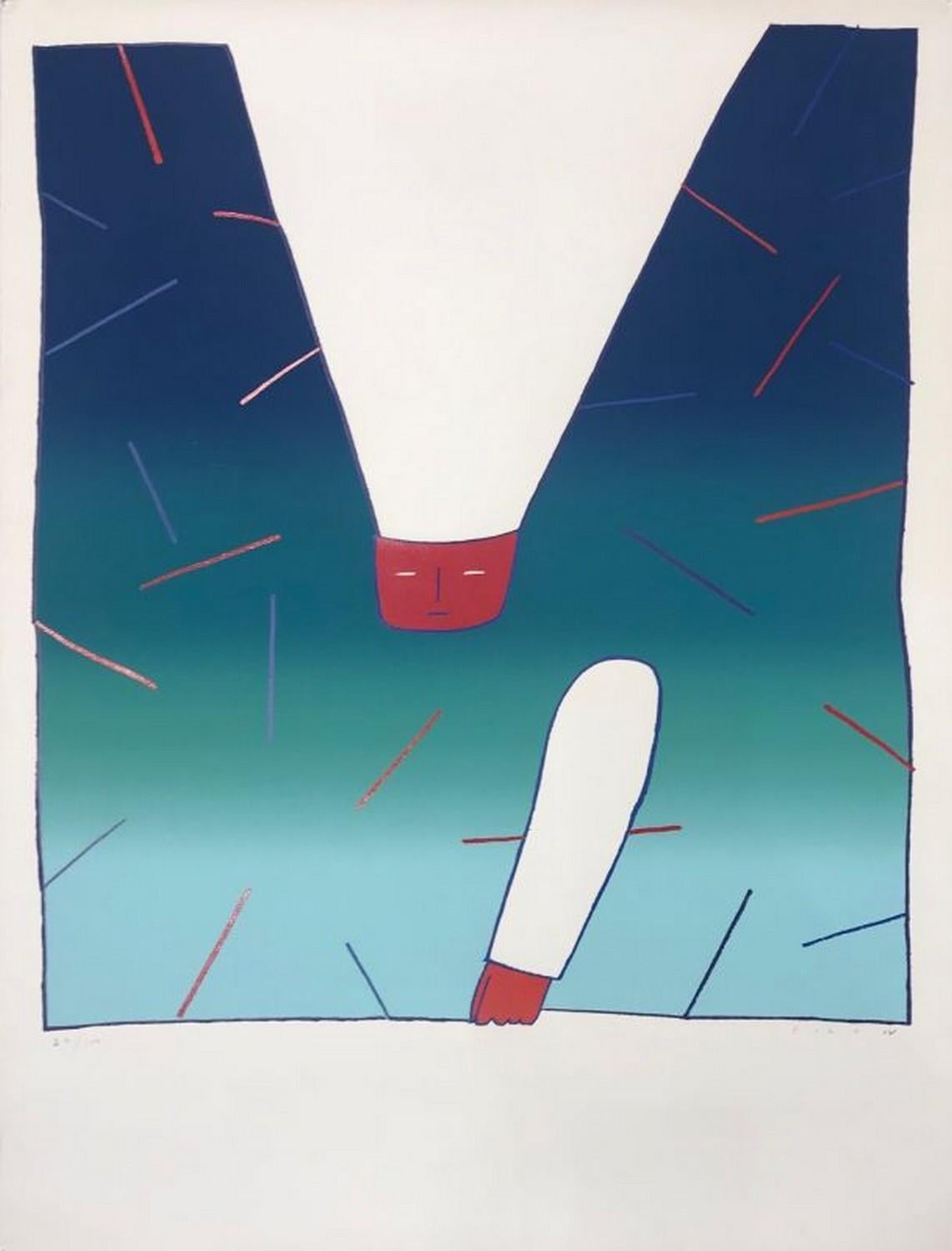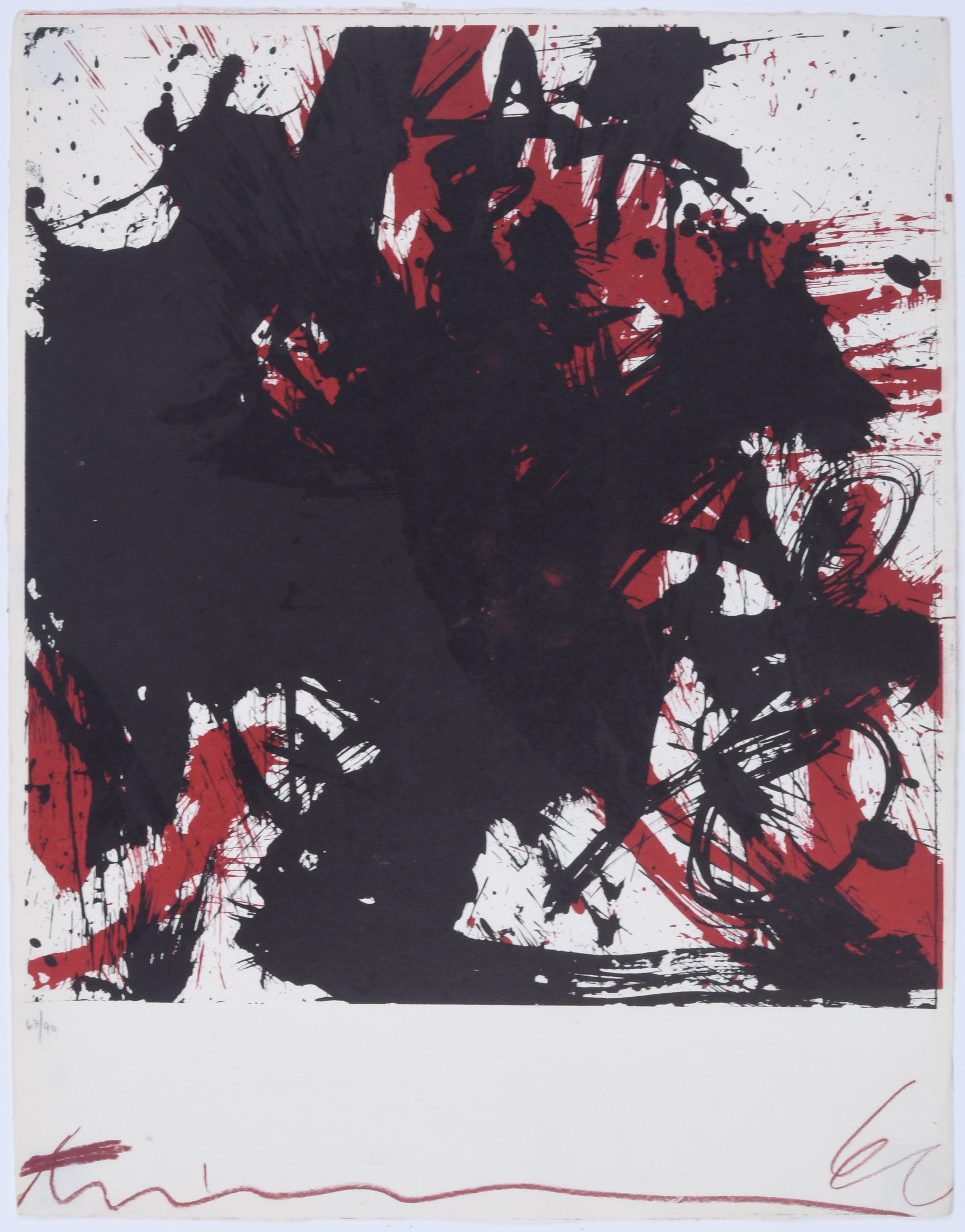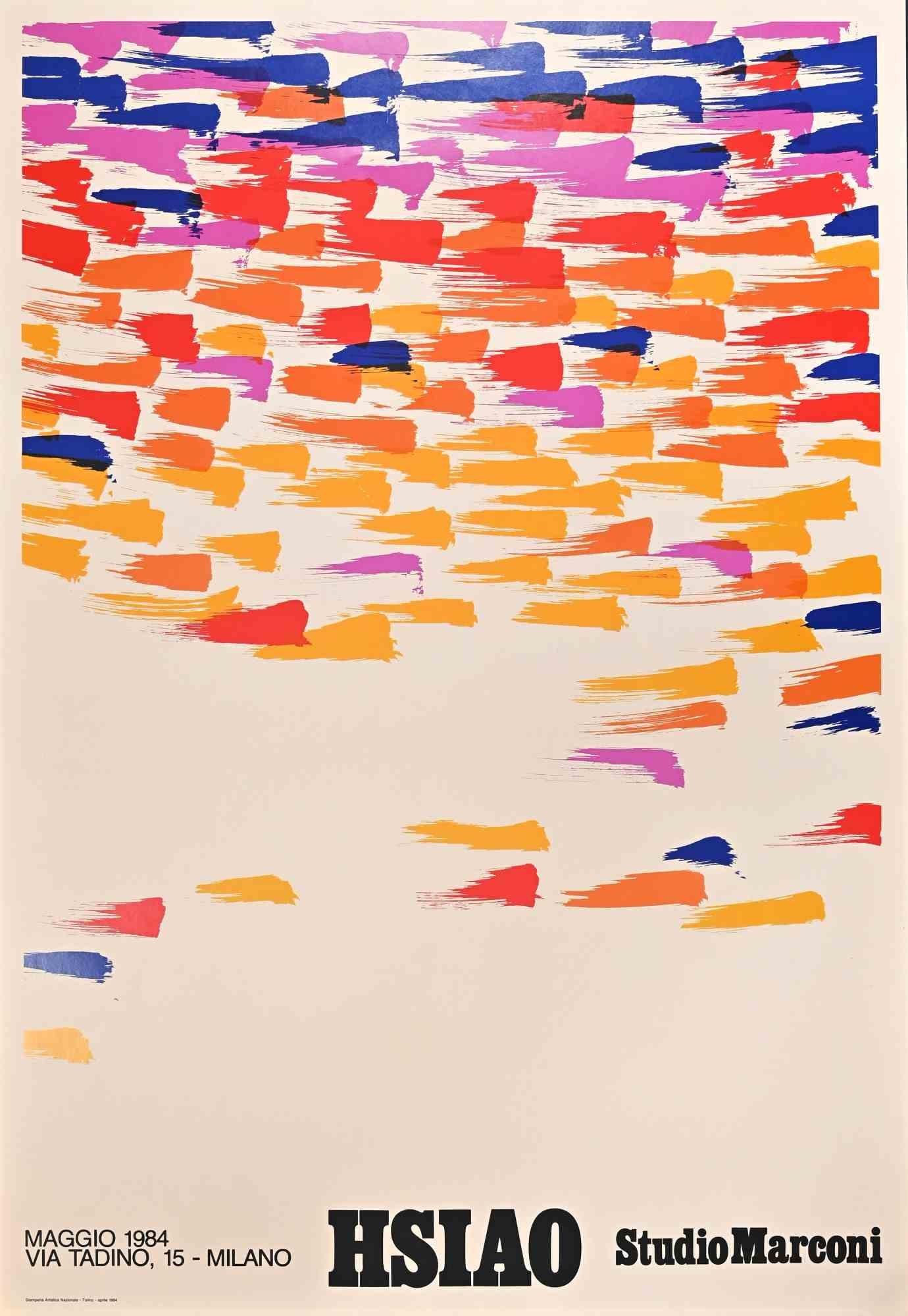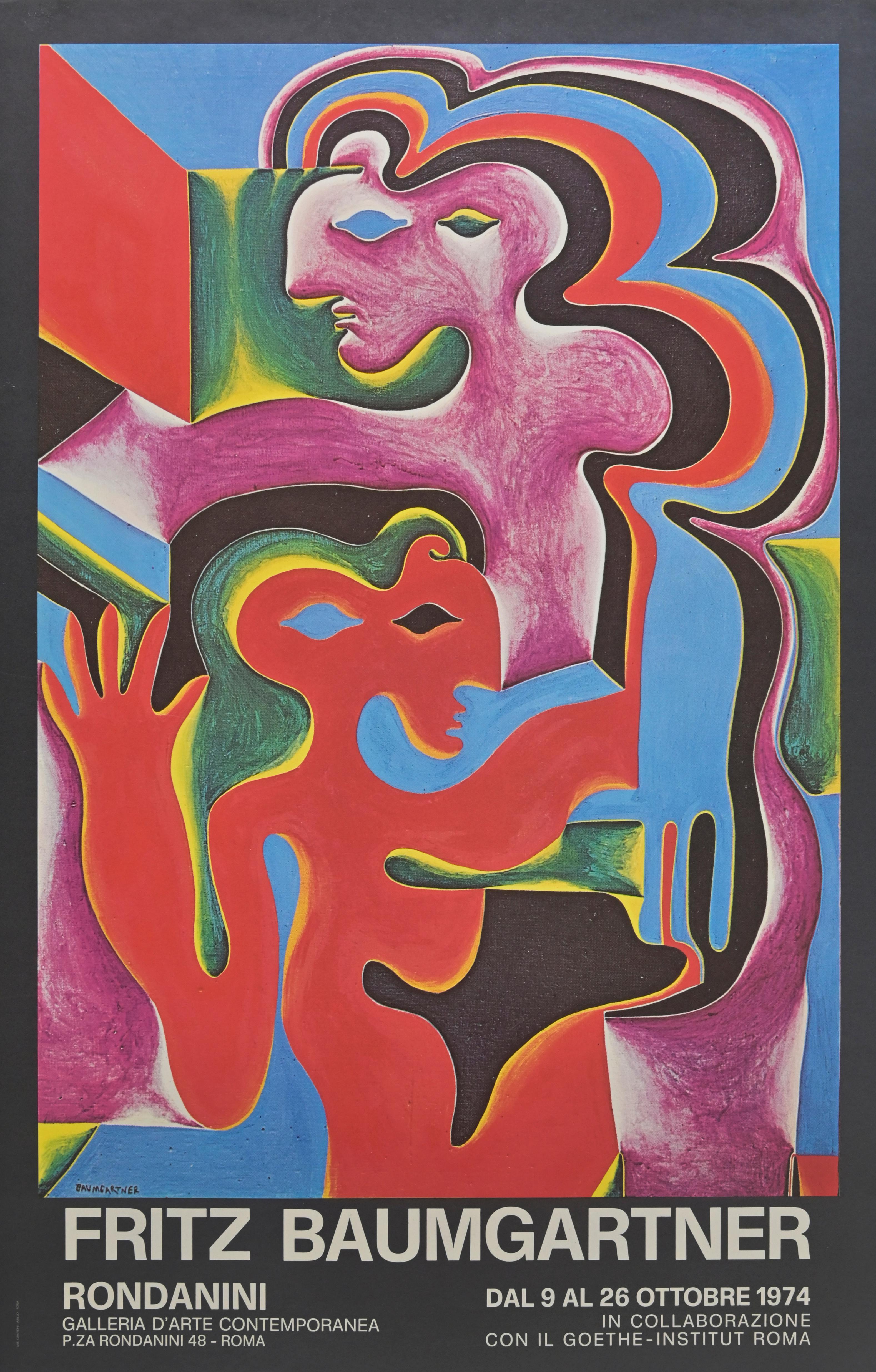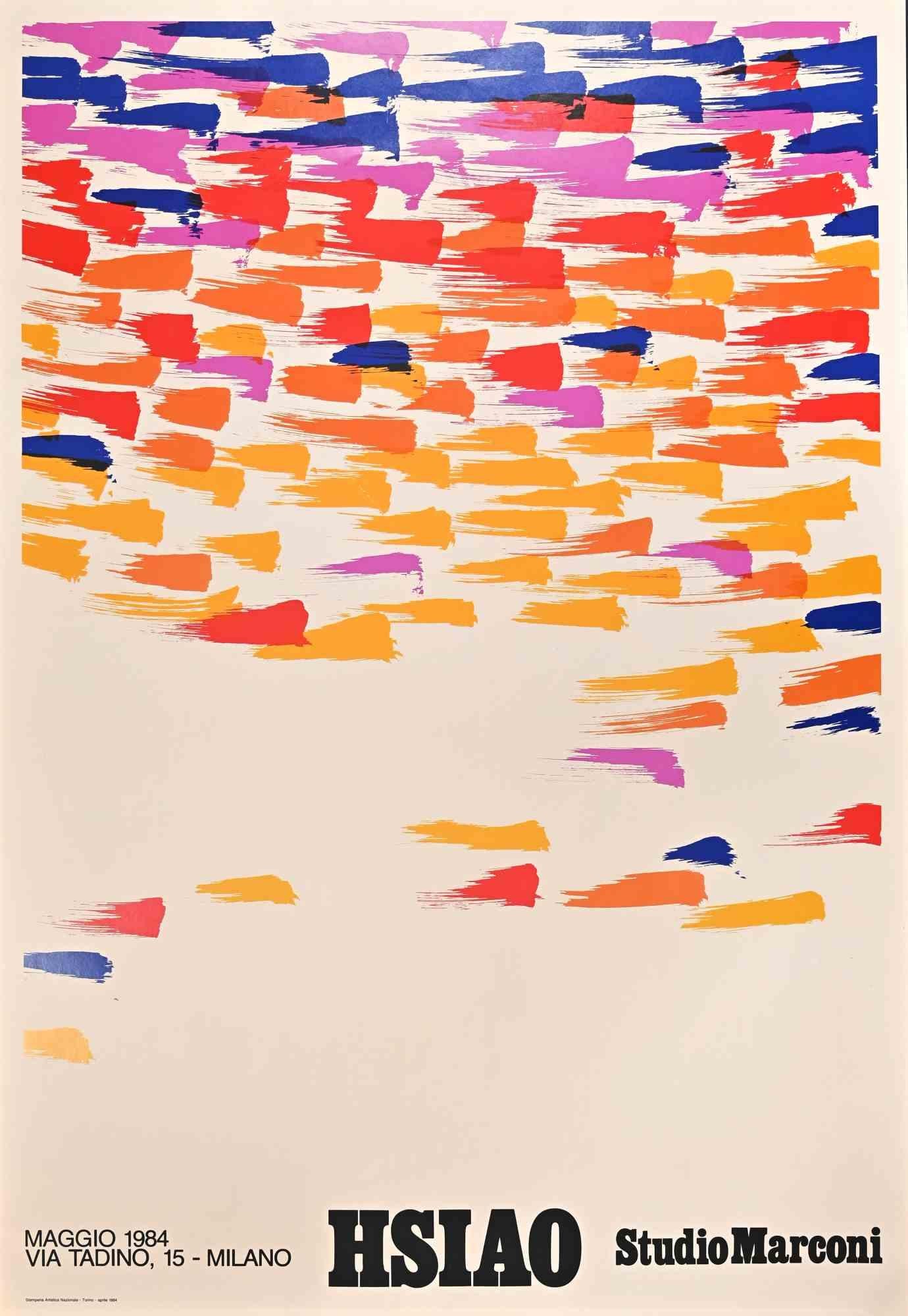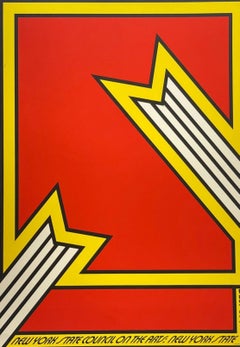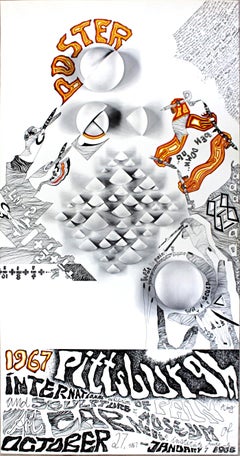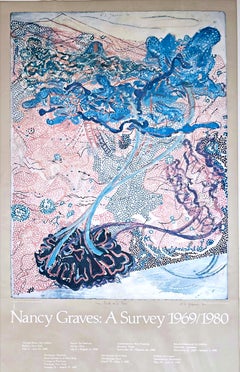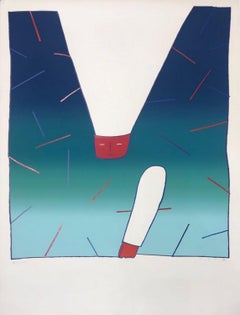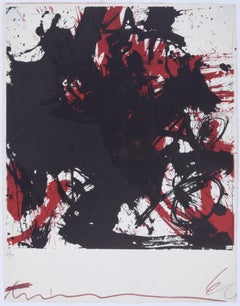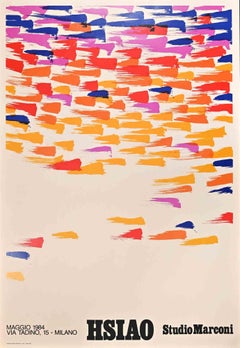Items Similar to Samaras at Whitney Museum of American Art Exhibition Poster
Want more images or videos?
Request additional images or videos from the seller
1 of 8
Lucas SamarasSamaras at Whitney Museum of American Art Exhibition Poster1973
1973
$880
£673.21
€774.27
CA$1,256.75
A$1,385.28
CHF 715.79
MX$16,560.09
NOK 9,004.54
SEK 8,462.98
DKK 5,783.09
About the Item
Lucas Samaras
Samaras at Whitney Museum of American Art Exhibition Poster, 1973
Offset lithograph poster
32 × 24 inches
Unframed
This early vintage poster was published for the Samaras exhibition at the Whitney Museum of American Art from November 18 to January 7, 1973.
Publisher
Pace Editions Inc.
About Lucas Samaras:
Eluding historical categorization, Lucas Samaras’s oeuvre is united through its consistent focus on the body and psyche, often emphasizing autobiography.
The theme of self-depiction and identity has been a driving force behind his practice, which, at its onset in the early 1960s, advanced the Surrealist idiom yet proposed a radical departure from the presiding themes of Abstract Expressionism and Pop art.
Samaras emigrated with his family from Greece to the United States in 1948, settling in West New York, New Jersey. He attended Rutgers University, New Brunswick, New Jersey, studying under Allan Kaprow and George Segal, and then at Columbia University, New York, where he studied art history under Meyer Schapiro. His interest in self-investigation began during this period, when he initiated painting self-portraits from the front and back using a mirror. He also gravitated toward the use of pastels, which enabled him to work quickly, exploring figurative and geometrical forms in rich colors and with luxuriant texture, characteristics that would reoccur throughout his work. He soon shifted toward objects, producing assemblage reliefs and boxes comprised of elements culled from his immediate surroundings and five-and-dime stores—cutlery, nails, mirrors, brightly colored yarn, and feathers—affixed with liquid aluminum or plaster.
His first New York exhibition was held at Reuben Gallery in 1959, which came on the heels of his first group show at the gallery, Kaprow’s 18 Happenings in 6 Parts. Through his involvement at the Reuben Gallery and his participation in Happenings, Samaras met Jim Dine, Red Grooms, and Claes Oldenburg. He had met Robert Whitman, another key figure in the Happenings movement, while at Rutgers and the two collaborated on performances. Samaras debuted his assemblage boxes in 1961 at Green Gallery, New York. For the artist, the boxes possessed elements of sculpture, architecture, and painting, amplified by the inclusion of objects such as mirrors and photographs—additions that situated Samaras as one of the earliest artists to emphasize his ego and corporeal self in his art. His early boxes led to his inclusion in his first institutional group show, The Art of Assemblage, held at The Museum of Modern Art, New York, in 1961.
In 1965, Samaras joined Pace Gallery, which mounted an exhibition of his works made between 1960 to 1966, that included Samaras’ immersive Room No. 2 (1966), also known as Mirrored Room. A culmination of his mirrored boxes, Room No. 2 was his first installation to become a part of a museum collection, acquired in 1966 by the Albright-Knox Art Gallery, Buffalo, New York. Samaras received his first major solo exhibition at The Museum of Modern Art, New York in 1969, which was followed by his first international museum exhibition, held at the Kunstverein Museum in Hanover (1970). By the mid-1970s, he had also received his first large-scale commission for which he produced Silent Struggle (1976), a sculpture comprised of Cor-ten steel, initially installed at the Hale Boggs Federal Courthouse in New Orleans.
In 1969, Samaras began to expand upon his use of photography, experimenting with a Polaroid 360 camera, which appealed to his sense of immediacy. His innovation further materialized with his use of the Polaroid SX-70 in 1973 in a melding of self-portraiture and abstraction, created by manipulating the wet-dye emulsions with a stylus or fingertip before the chemicals set. This processed progressed with digital art in 1996 when he obtained his first computer and began to experiment with printed texts on typewriter paper. By 2002, he had acquired a digital camera and the use of Photoshop became an integral component of his practice. These technologies gave way to Photofictions (2003), a series characterized by distorted self-portraits and psychedelic compositions.
Gesturing toward a larger investigation of (self) reflection in his work, found in his mirror rooms, self-portraiture, and use of digital mirror-imaging, Samaras’s oeuvre acts as an extension of his body while underscoring the transformative possibilities of the everyday—a true blurring of art and life.
Courtesy of Pace Gallery
- Creator:Lucas Samaras (1936, American)
- Creation Year:1973
- Dimensions:Height: 32 in (81.28 cm)Width: 24 in (60.96 cm)
- Medium:
- Movement & Style:
- Period:
- Condition:
- Gallery Location:New York, NY
- Reference Number:1stDibs: LU1745214077332
About the Seller
5.0
Gold Seller
Premium sellers maintaining a 4.3+ rating and 24-hour response times
Established in 2007
1stDibs seller since 2022
458 sales on 1stDibs
Typical response time: 2 hours
- ShippingRetrieving quote...Shipping from: New York, NY
- Return Policy
Authenticity Guarantee
In the unlikely event there’s an issue with an item’s authenticity, contact us within 1 year for a full refund. DetailsMoney-Back Guarantee
If your item is not as described, is damaged in transit, or does not arrive, contact us within 7 days for a full refund. Details24-Hour Cancellation
You have a 24-hour grace period in which to reconsider your purchase, with no questions asked.Vetted Professional Sellers
Our world-class sellers must adhere to strict standards for service and quality, maintaining the integrity of our listings.Price-Match Guarantee
If you find that a seller listed the same item for a lower price elsewhere, we’ll match it.Trusted Global Delivery
Our best-in-class carrier network provides specialized shipping options worldwide, including custom delivery.More From This Seller
View AllVintage 1970 New York State Council on the Arts Award poster Nicholas Krushenick
By Nicholas Krushenick
Located in New York, NY
Nicholas Krushenick
New York State Council on the Arts Award poster, 1970
Silkscreen on wove paper - original 1970 poster, not a reprint
Unsigned, unnumbered, unframed
35 × 25 inches...
Category
1970s Pop Art Abstract Prints
Materials
Screen, Offset
Rare historic 1960s Lt Ed Fluxus poster Pittsburgh International Carnegie Museum
By Mary Bauermeister
Located in New York, NY
Mary Bauermeister
Pittsburgh International Carnegie Museum, 1967
Offset Lithograph Poster
20 × 37 inches
Edition of 500
Unframed
This is the original, historic poster designed by Mar...
Category
1960s Abstract Abstract Prints
Materials
Offset, Lithograph
5745, for the Jewish Museum original signed/n abstract expressionist screenprint
By Nancy Graves
Located in New York, NY
Nancy Graves
5745, for the Jewish Museum, 1984
Silkscreen on paper
Signed, numbered 5/90 and dated in graphite pencil on the front; bears publishers' blind stamp front left corner
3...
Category
1980s Abstract Expressionist Abstract Prints
Materials
Graphite, Screen
Rare offset lithograph poster (signed and inscribed to founder, Tallix Foundry)
By Nancy Graves
Located in New York, NY
Nancy Graves
Nancy Graves: A Survey 1969/1980 (Hand signed and inscribed to Dick Polich of Tallix), 1980
Offset lithograph poster (hand signed, dated and inscribed)
signed, dated and...
Category
1980s Abstract Expressionist Abstract Prints
Materials
Offset
The Butler Institute of American Art poster (Hand Signed by Peter Halley)
By Peter Halley
Located in New York, NY
Peter Halley
New Works, The Butler Institute of American Art (Hand Signed), 1999
Offset lithograph poster (signed by Peter Halley)
38 × 21 1/2 inches
Boldly signed in black marker by...
Category
1990s Abstract Geometric Abstract Prints
Materials
Offset, Lithograph
Untitled Abstract Expressionist lithograph, from Carnegie Museum (155 Lembark)
By Sam Francis
Located in New York, NY
Sam Francis
Untitled (from Fresh Air School), 1972
Lithograph on wove paper, for the Carnegie Museum of Art
15 × 22 inches
Limited Edition of 6,000 (unsigned edition; there is a sepa...
Category
1970s Abstract Expressionist Abstract Prints
Materials
Lithograph
You May Also Like
Folon 20 ans d'affiches
By Jean Michel Folon
Located in Paris, FR
Silksreen, 1984
Handsigned by the artist in pencil and numbered 24/100
85.00 cm. x 65.00 cm. 33.46 in. x 25.59 in. (paper)
67.00 cm. x 60.00 cm. 26.38 in. x 23.62 in. (image)
Poste...
Category
1980s Abstract Abstract Prints
Materials
Silk
Chrome Contada No. 8, Psychedelic Abstract Lithograph by Stephen T. Vassiliades
Located in Long Island City, NY
Artist: Stephen T. Vassiliades
Title: Chroma Cantata No. 8
Medium: Lithograph, signed and numbered in pencil
Edition: 300
Paper Size: 27 in. x 40 in. (68.58 cm x 101.6 cm)
Category
1980s Abstract Abstract Prints
Materials
Lithograph
Untitled (Martha Jackson Gallery Poster)
By Walasse Ting
Located in Fairlawn, OH
Untitled (Martha Jackson Gallery Poster)
Lithograph, 1960
Signed and dated in red crayon by the artist
Edition 90 (63/90)
1st state before letters for the poster created for the Martha Jackson Gallery, Ting Exhibition, April 23-May 31, 1960
Printed on wove paper with a ”JAPAN' watermark
Edition: 90
Provenance: Martha Jackson Gallery, New York
Anderson Gallery
David K. Anderson Collection (label)
Walasse Ting (Chinese: 丁雄泉, 13 October 1929 – May 17, 2010)[1] was a Chinese-American visual artist and poet. His colorful paintings have attracted critical admiration and a popular following. Common subjects include nude women and cats, birds and other animals.
He was born on 13 October 1929 in Shanghai, left China in 1946 and lived for a while in Hong Kong, then settled in Paris in 1952.[2] There, he associated with artists such as Karel Appel, Asger Jorn, and Pierre Alechinsky, members of the avant-garde group CoBrA. Ting started his career as an artist in Paris in the 1950s, where he became friends with artists such as Sam Francis and Pierre Alechinsky. His early works were influenced by the CoBrA group, a European art movement known for its use of expressive, childlike imagery. In the 1960s, Ting moved to New York City and became associated with the Pop Art movement. Ting is perhaps best known for his series of paintings featuring women, which he called "Cat Women...
Category
1960s Abstract Abstract Prints
Materials
Lithograph
Studio Marconi - Vintage Offset Print - 1984
By Hsiao Chin
Located in Roma, IT
Expo 84 - Studio Marconi - Milano is a poster on coated paper realized in 1984 by Chin HSIAO
EXPO 84 - STUDIO MARCONI - MILANO
Printed by Stamperia Artistica Nationale - Torino
Good...
Category
1980s Contemporary Abstract Prints
Materials
Offset
Manifest of Fritz Baumgartner - Vintage Offset Poster - 1974
By Fritz Baumgartner
Located in Roma, IT
Vintage poster after Fritz Baumgartner is a vintage offset artwork on paper realized in 1974.
Original colored offset.
Good condition and aged.
Titled on the bottom center.
The ...
Category
1970s Abstract Abstract Prints
Materials
Paper, Offset
Studio Marconi - Vintage Offset Print - 1984
By Hsiao Chin
Located in Roma, IT
Studio Marconi is an exhibition poster realized after Hsiao Chin in 1984.
Offset print realized in the occasion of the exhibition held at Studio Marconi, Milano, in 1984.
Good cond...
Category
1980s Contemporary Abstract Prints
Materials
Offset
More Ways To Browse
Poster 1973
Exhibition Poster 1973
Whitney Poster
Whitney Museum Poster
Ed Clark
Ellsworth Kelly Maeght
Felipe Pantone
Frank Stella Poster
George Braque Signed Print
Henri Epstein
Henri Gaudier Brzeska
Irwin Hollander
Jean Michel Basquiat Signed
Jim Dine Signed 8 Hearts
Joan Miro Carborundum
John Chamberlain On Sale
Marcel Mouly Signed Print
Michael Abramson
